How to Prepare your Caravan for Winter
Keeping your caravan free of frost damage over the winter is a matter of preparation
Words by Sammy Faircloth
Efficient caravan heating systems mean that winter touring is a cosy delight. It’s not for everyone, though. Long, dark evenings. The possibility of towing in adverse weather conditions deters many people. But winter caravanning is increasing in popularity. More sites are are open all year too.
Whether you are a habitual, or occasional, winter, or novice caravanner, there are some golden rules. The rules will help to keep your caravan in top condition throughout the winter months.
If you’re hibernating your caravan, you only need to do the tasks we outline here once, at the onset of winter.
But remember. Each time you use your caravan in winter you need to allow time at home for essential housekeeping jobs. Especially draining the water system.
Water system
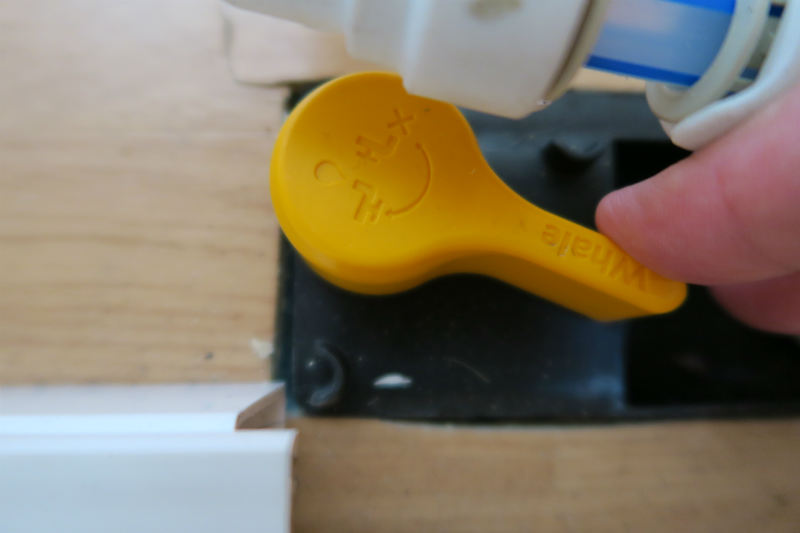
Top of the list of winter tasks has to be draining your caravan’s water system. Doing this will prevent even the tiniest of water droplets from freezing in the pipework. If there is any water in the pipes, it will expand on freezing and this could split the pipes.
Empty the water heater by turning the yellow dump valve lever [Photo 4] to drain-down position. The taps in the kitchen, bathroom and shower need to be in the open position.
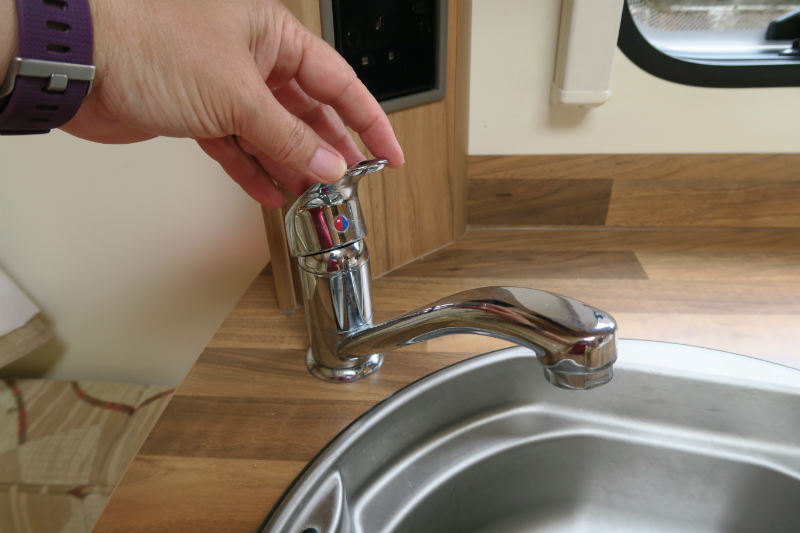
If you have a single lever mixer tap, make sure that the lever is in the central position. Then lift it up to make sure that you open both the hot and cold sides of the system.
For absolute peace of mind, use a Floe Caravan Water Drain-Down kit. It connects to the water in-supply at the side of the caravan with either a foot pump or 12-volt tyre compressor. Make sure that it is set to no more than 15psi (1 bar). The device blasts air through the pipes to push out any residual water.
Water can gather in the shower hose if you leave it looped. It’s best to leave the shower head dangling downwards towards the tray.
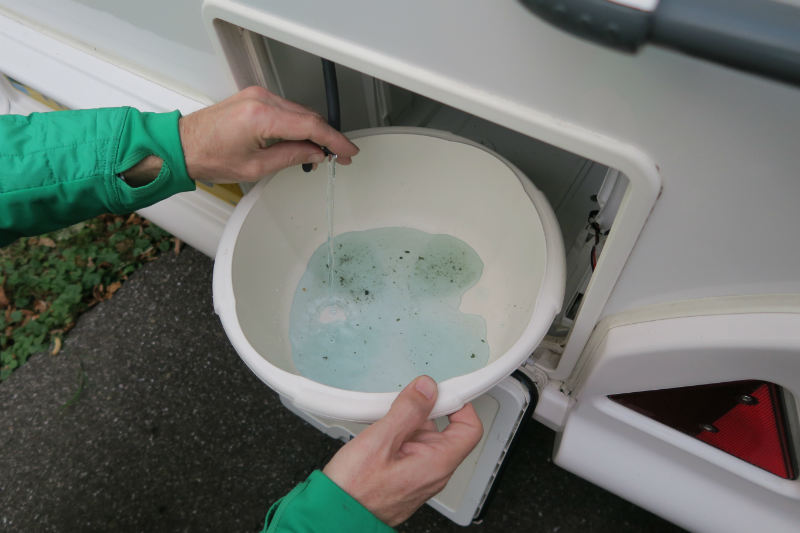
The next step is to drain the flush water tank to your cassette toilet. This often gets overlooked, but still is at risk of frost damage. You will find the drain-down pipe in the external compartment which houses the cassette. Remove the plug and make sure that you have a bowl ready to catch the water.
If there is no drain-down pipe, flush the toilet until no more water comes out. But make sure that you empty the cassette! It's best to leave the toilet blade in the open position to prevent the rubber seal from sticking to the blade. Also, it’s best to remove the cap on the end of the cassette emptying spout to allow ventilation to the holding tank.
Gas
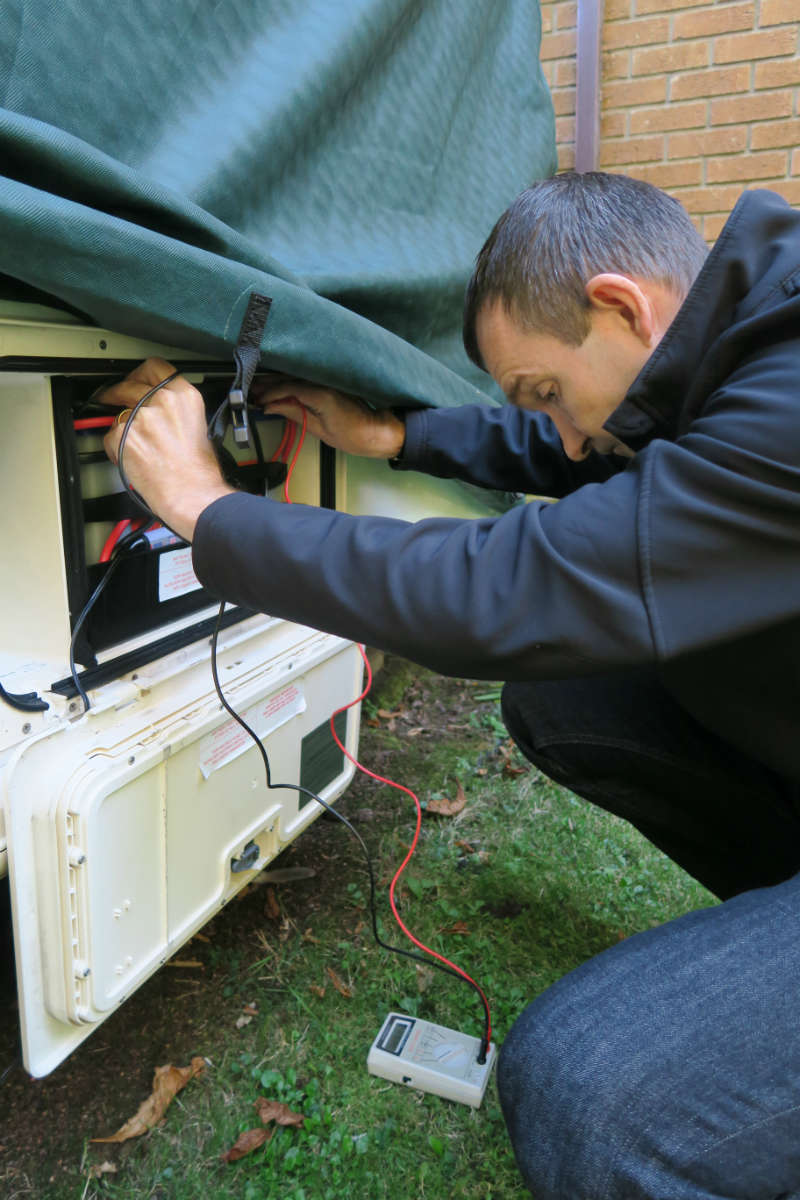
It’s fine to leave gas bottles in the gas locker of your caravan as long as you disconnect the regulators. If the caravan is going into storage, check the gas cylinder policy. Some storage facilities do not allow you to leave gas cylinders on their sites.
Electricity
You must check leisure batteries all through the winter. If left unattended they will discharge and this shortens the life of the battery. There are various ways of preventing this from happening.
If you are storing a caravan at home, plug it into the mains supply to charge the battery in the normal way. You would do this on a pitch. This will also enable you to run an oil-filled heater, on occassion, to keep dampness and mildew at bay.
In our first year of storing our caravan for the winter we didn’t run a heater. The following spring there was mould everywhere – even on our wooden spoons! That said, there is a school of thought that you don’t need to heat a caravan during the winter. That's provided there is a little ventilation and you leave locker doors open to circulate the air.
If your caravan has a security system or tracker, then it will need a source of power. Ensure that you check the status of the battery at regular intervals.
Tyres
When a caravan is standing in one position for long periods, all the pressure on the tyres is of course in one place. This can cause cracking in the side walls, which means you will need to replace the tyres.
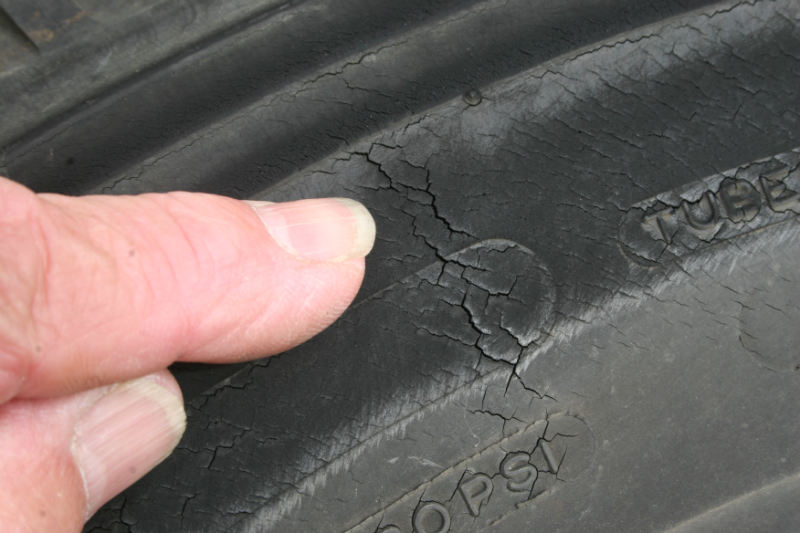
To avoid this happening, you can move the caravan forward or backwards. Or jack up the caravan and rotate each wheel, so that it rests on a different sector of the tyre. Which is easier for you depends on the space in which you store the caravan.
Upholstery and cabinets
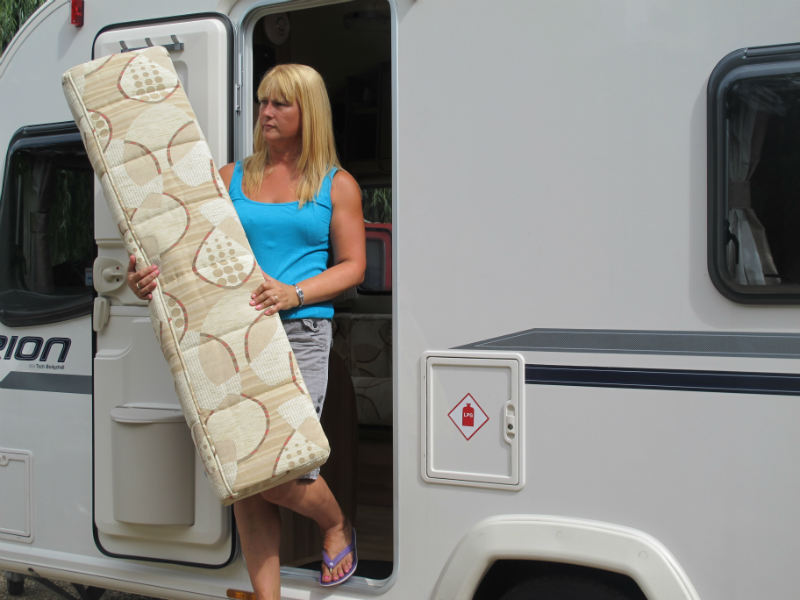
Storing your caravan upholstery in a heated house means it stays damp-free in the winter. If you don’t have space at home to store the upholstery, do this. Stand each section on its end in the caravan so that there is airflow all around it.
If you can remove the upholstery, there is an added advantage. A caravan with no upholstery is less attractive for thieves.
Give your caravan a good clean, in particular the refrigerator. Our tip: use one teaspoonful of bicarbonate of soda added to half a litre of warm water.
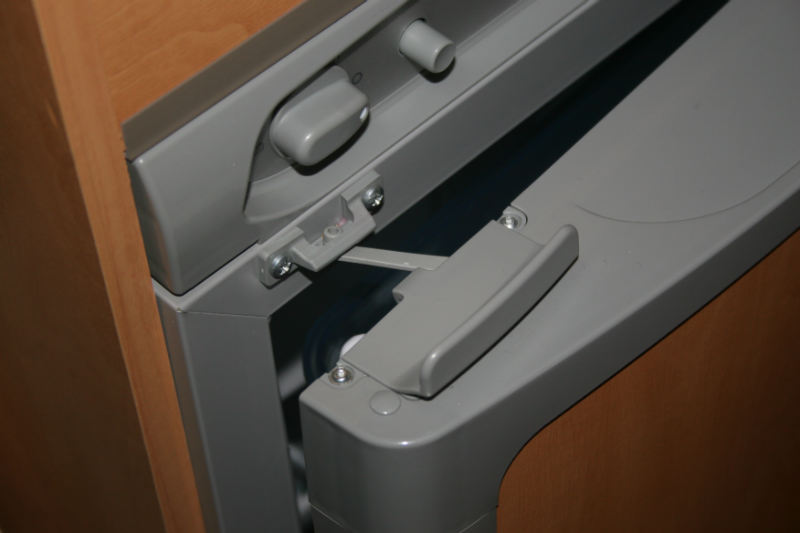
Remember to leave the freezer and fridge doors open to allow airflow. It prevents mould from forming.
Blinds are best left in the open position if they are the spring-coil type. This prevents strain on the springs. If security is a concern, then draw the curtains instead of closing the blinds.
Dampness is an inevitable feature of winter. This is why some people invest in a dehumidifier, or buy the cheaper granular versions. They prevent build-up of damp and mould. Moisture absorbing crystals are ideal. You should replace them often.
Caravan covers
-w800.jpg)
Caravan covers are good for protecting your caravan from the weather, bird poo, tree sap, algae and falling leaves.
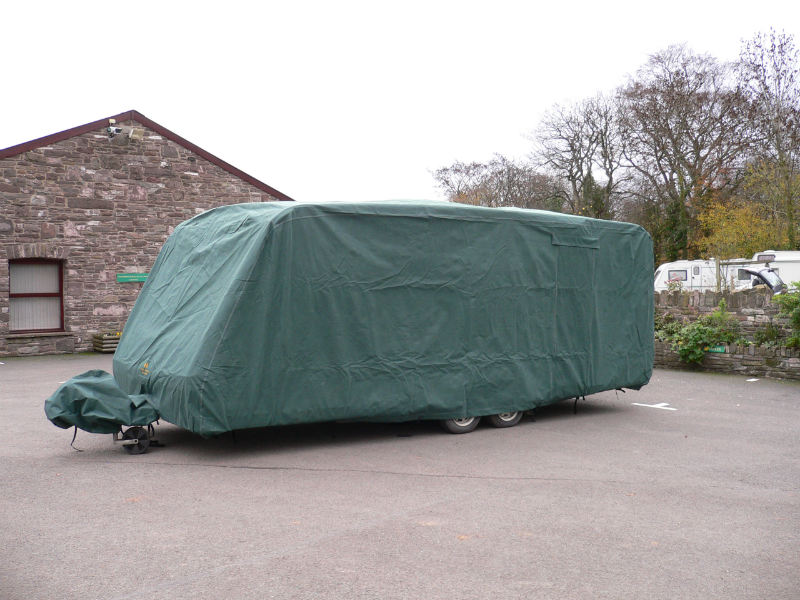
Before fitting a cover, it’s essential to give your caravan a good clean. It ensures there is nothing abrasive that could scratch the surface or windows on windy days. It’s amazing how much damage a small piece of grit can cause!
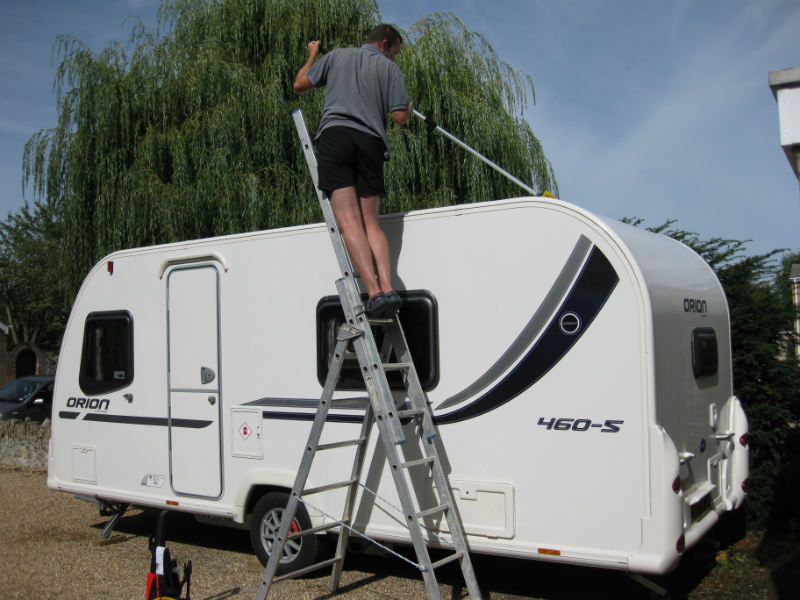
Caravan covers are available in two types, in general: universal fit and made-to-measure. In our experience, the made-to-measure, breathable covers are the best. They fit your caravan. They avoid too much movement and flapping edges that could cause damage on stormy days.
Breathable covers allow the moisture to escape. This prevents condensation and mould building up. Companies, including Pro-Tec and Specialised Covers, tailor covers to fit individual caravan makes.
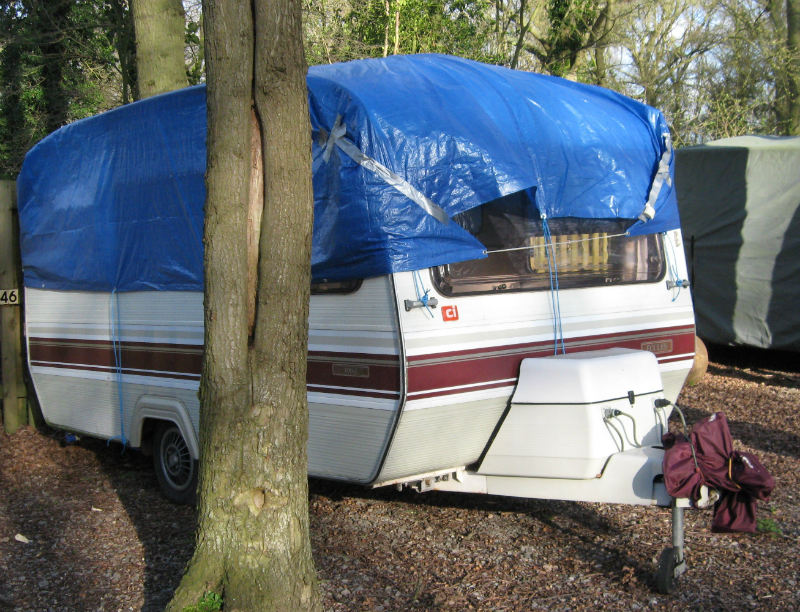
Avoid using tarpaulin as this is not breathable and can be prone to coming loose in extreme winds.
Security
You’ll already doubtless have a hitch lock and a wheel clamp. Most insurance companies demand that you use these as part of policy conditions. You can get extra security devices, including locking wheel nuts. Companies including Milenco and Towsure offer a raft of security devices.
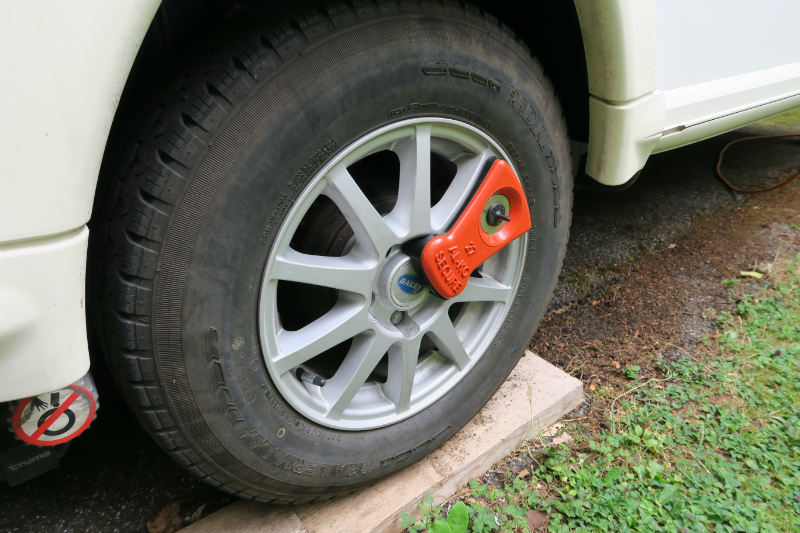
It’s wise to remove the radio face plate from inside the caravan if you are leaving it with the blinds open. It won't then attract would-be thieves.
For robust security, fit a good quality alarm. Also, trackers will increase the possibility of getting your caravan back and undamaged. An added bonus is that these security devices can help to reduce your insurance premium.
Make sure that you have registered the caravan with the Central Registration & Identification Scheme (CRiS). And, have an insurance policy that covers every eventuality.
Storage options
There are various storage options to consider. Each has advantages and disadvantages, depending on how often you use your caravan. And, how much (or little) you want to spend on storage and where you live.
At Home
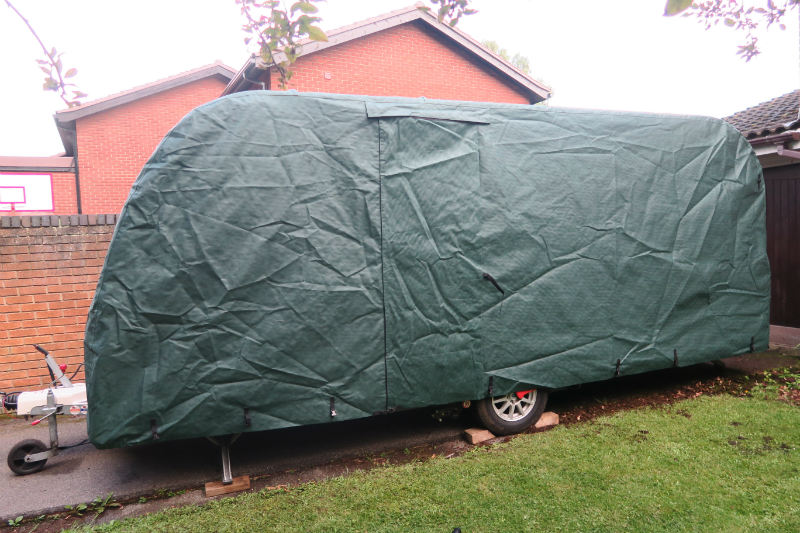
Storing your caravan on a driveway at home has this advantage. You can connect it to the mains supply for topping up the leisure battery or running heating when the temperature plummets.
Also, it is easier to keep an eye on for security and routine maintenance. And, of course, home storage is super-convenient if you decide to take a short break away during the winter.
The disadvantage is that, when you are away in your caravan, it’s obvious to would-be thieves that the house is empty. It might become a target.
Commercial storage facilities
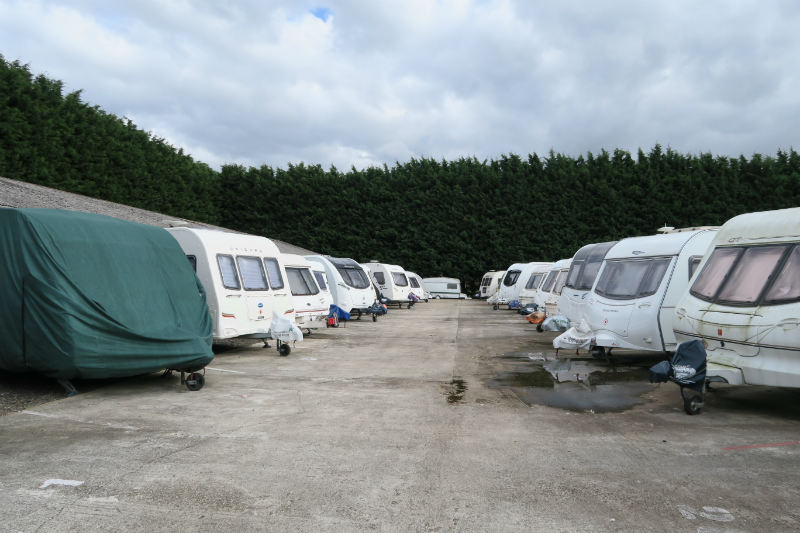
Commercial storage sites can offer CCTV security, perimeter fencing, access control and on-site facilities. Whether a storage site is a practical option depends on whether there is a site close enough to your home.
And, of course, storage costs money; the amount you pay varies according to the level of security in place. Check with your caravan insurance provider if the storage facility meets with their criteria. A first port of call is the Caravan Storage Site Owners’ Association (CaSSOA). It represents hundreds of accredited storage sites across the UK. They give UK sites a Gold, Silver or Bronze rating, according to the level of security they provide.
Farm Storage
If you’re lucky you may live near a farm which offers caravan storage. This can be a cheaper option. But, of course, security measures are going to vary. They might have nothing or high-tech surveillance and in-barn storage.
Wherever you store your caravan, remember to inform your insurance company. Otherwise your insurance might be invalid in the event of a claim.








Recent Updates
Caravan showers: all you need to know
In this guide, we’ll discuss the different types of showers, how they work, and how to fit an external shower point to your caravan ...
Caravan towing: all you need to know
Towing a caravan may seem daunting initially, but a few simple tips can make the journey enjoyable and ...
All you need to know about towbars & towballs
Flange, detachable, swan neck, retractable – towbar technology choice is bewildering. Don’t worry. We’ll ...
Caravan WiFi: everything you need to know
Caravan holidays are the ultimate way of getting away from it all, although we sometimes need a link to the ...
Caravan insurance: all you need to know
Navigating the world of caravan insurance can feel like a daunting task. Fear not, as this comprehensive ...
Buying a caravan: what you need to know
Let us guide you through some of the complicated things to think about when first looking at buying a ...
Caravan awnings: a buyers' guide
Caravan awnings are a fantastic addition to any caravan as they are one of the simplest, quickest and most ...
Caravan electrics: avoid tripping out
All caravan owners have overloaded their mains supply at some time. Here’s how to master caravan electrics ...
Caravan heating systems: a quick guide to caravanning warmth
When winter is here, you’ll be glad of a decent caravan heating system if you’re out touring. Here’s how the ...
Caravan damp: a complete guide
There's little more guaranteed to strike fear into the heart of a caravan owner than the word 'damp'. But if ...
Other Articles
Caravan jockey wheels: the definitive guide
A well-functioning caravan jockey wheel can make all the difference to manoeuvring away from the towcar, especially if you don't have a caravan mover ...
Caravan cooking recipes
Caravan cookery inspirational ideas. No need to stress out in the kitchen with these quick and easy ...
Caravan bike racks: a complete guide
Exploring the beautiful surroundings while on a caravan trip is undeniably one of the greatest joys of the ...
A guide to solar power in your caravan
Not that many years ago, mains electrical hook-up on campsites was considered a bit of a luxury, and, for ...
The ultimate guide to caravan layouts
Choosing the right layout or floorplan of your caravan is an all-important part of the buying process – find ...
A guide to seasonal caravan pitches
Our in-depth guide to finding and securing seasonal caravan pitches on your favourite campsite ...
Caravan weights and payloads: a quick guide
The terminology of caravan weight – MIRO, MTPLM, noseweight, kerbweight, payload, weight plate upgrade – is ...
The ultimate guide to caravan motor movers
Caravan motor movers: everything you need to know about remote control caravan manoeuvring ...
Caravan cleaning: All you need to know
Whether you’re taking the caravan out for the first time or it’s just in need of a spruce up, our guide will ...
18 essential items for camping with your dog
Camping is for the whole family – including our four-legged members. Here's what you'll need to keep your dog ...